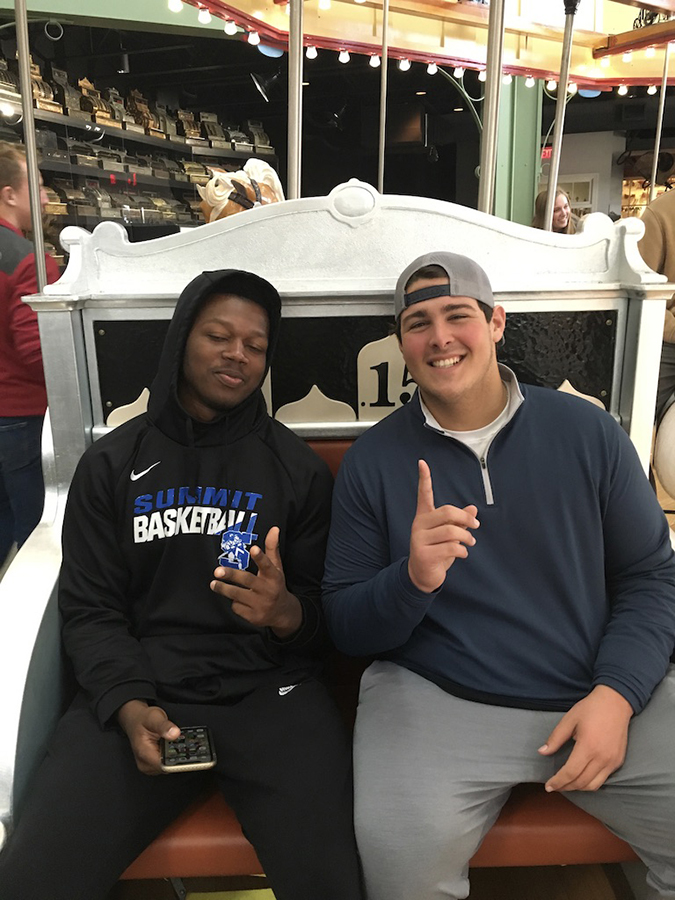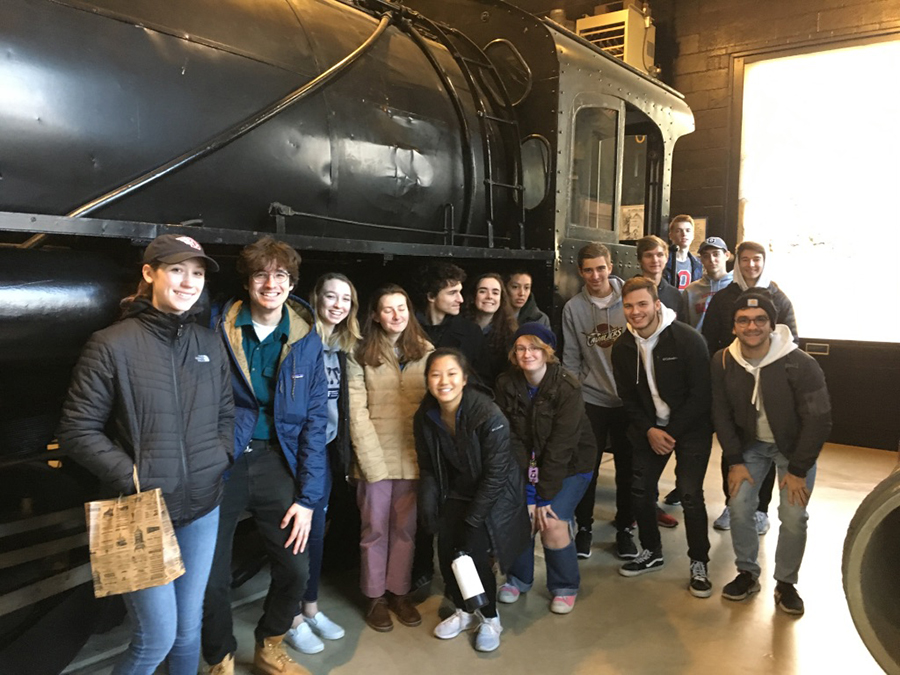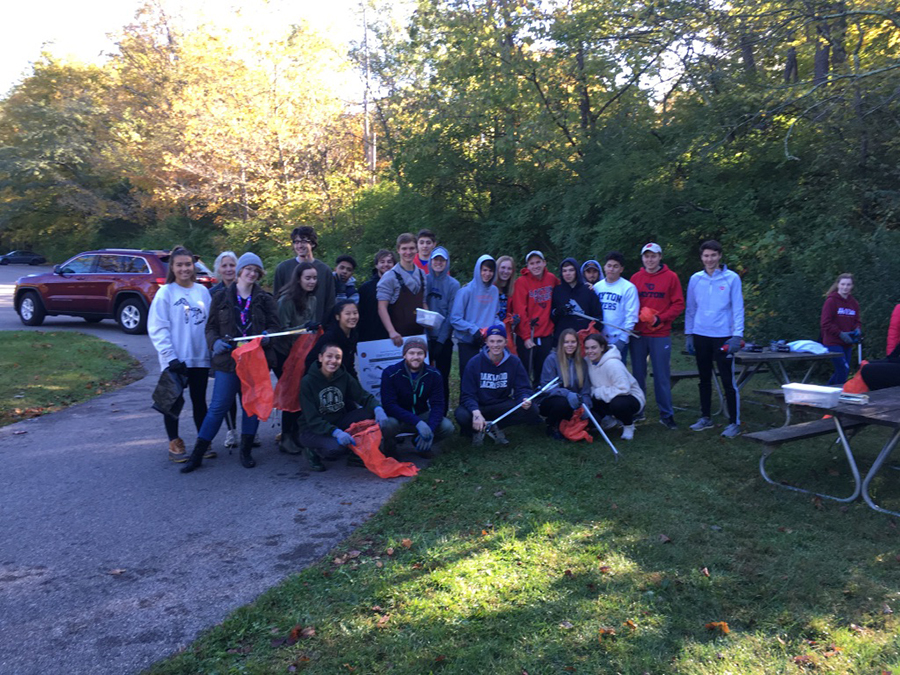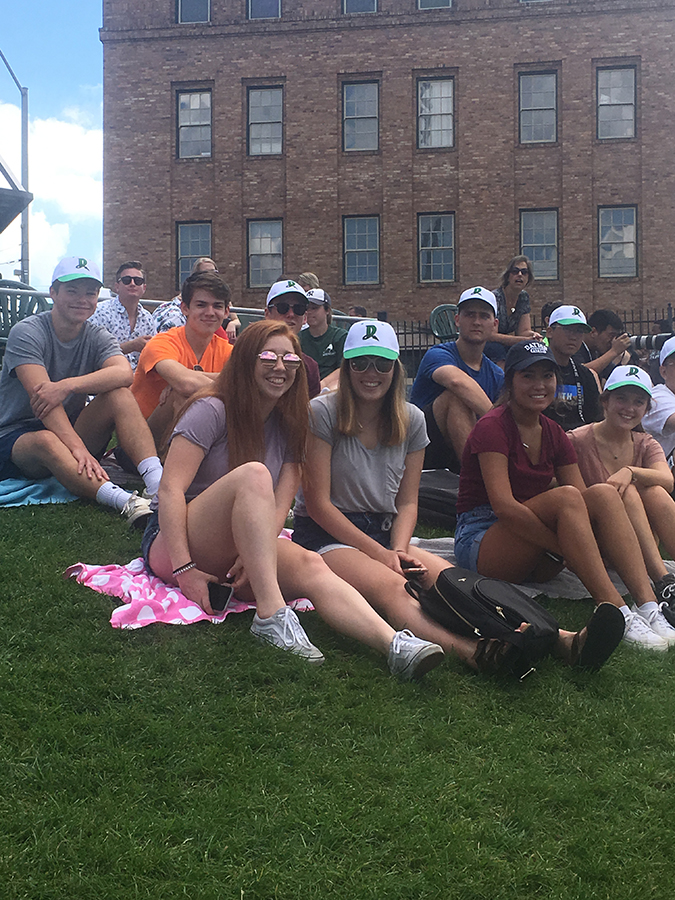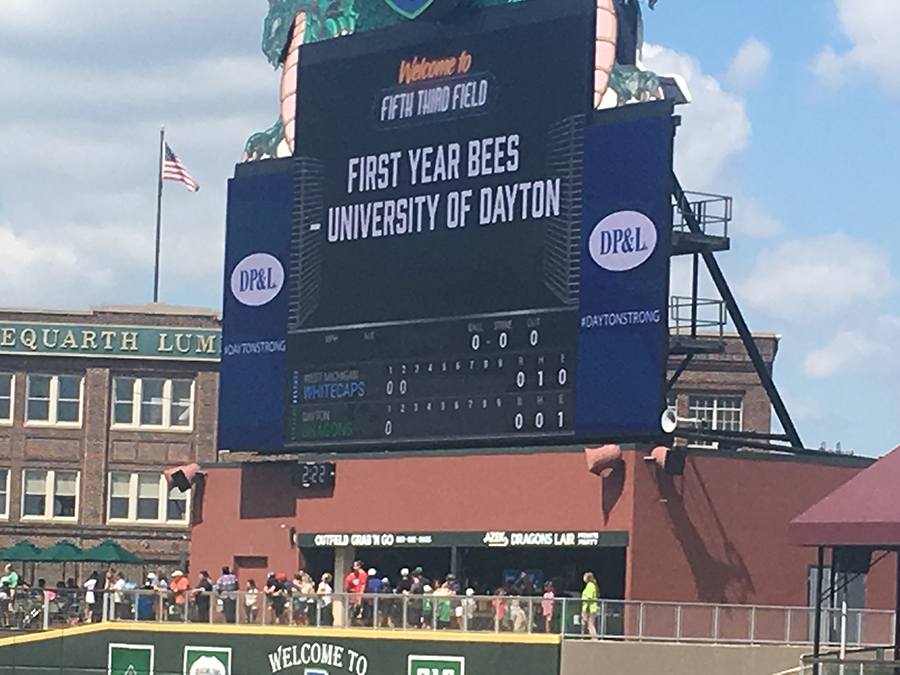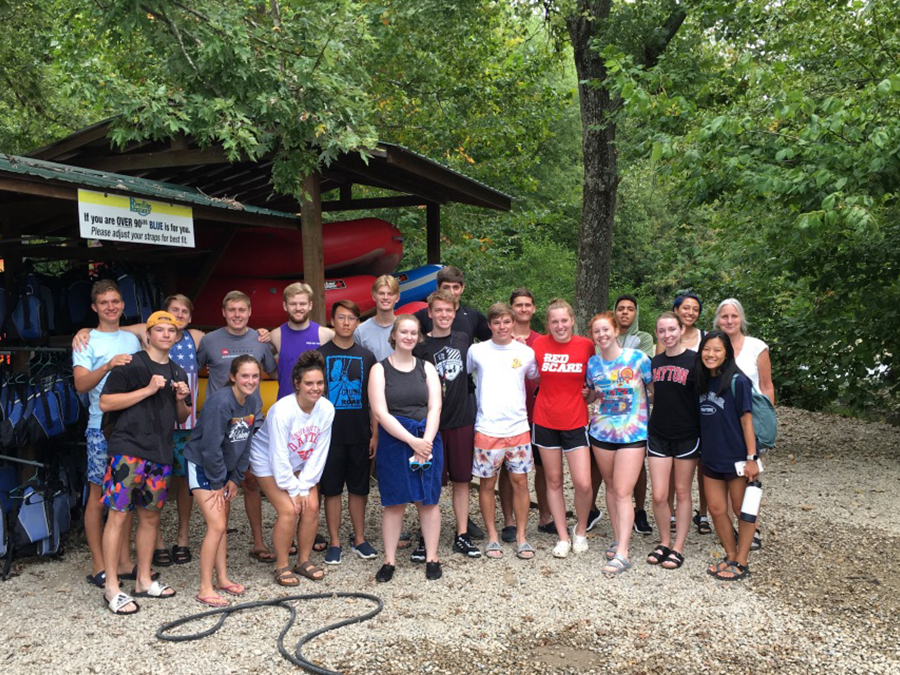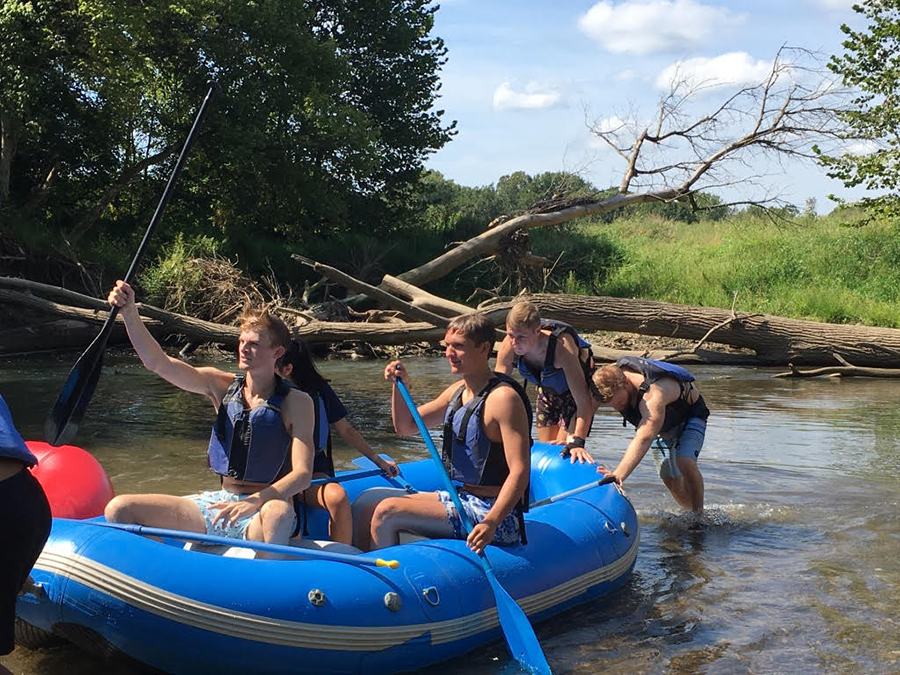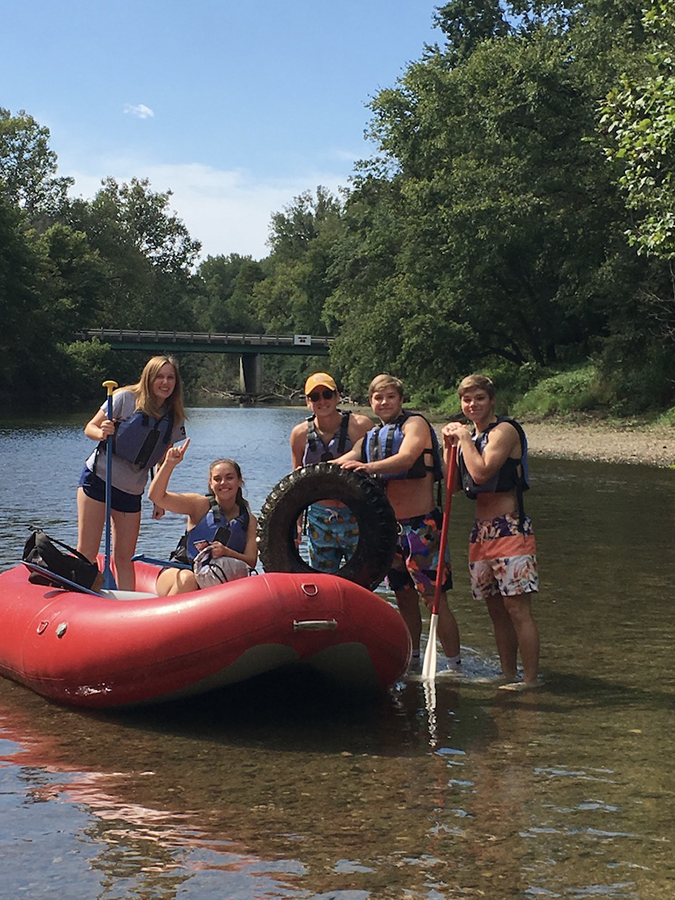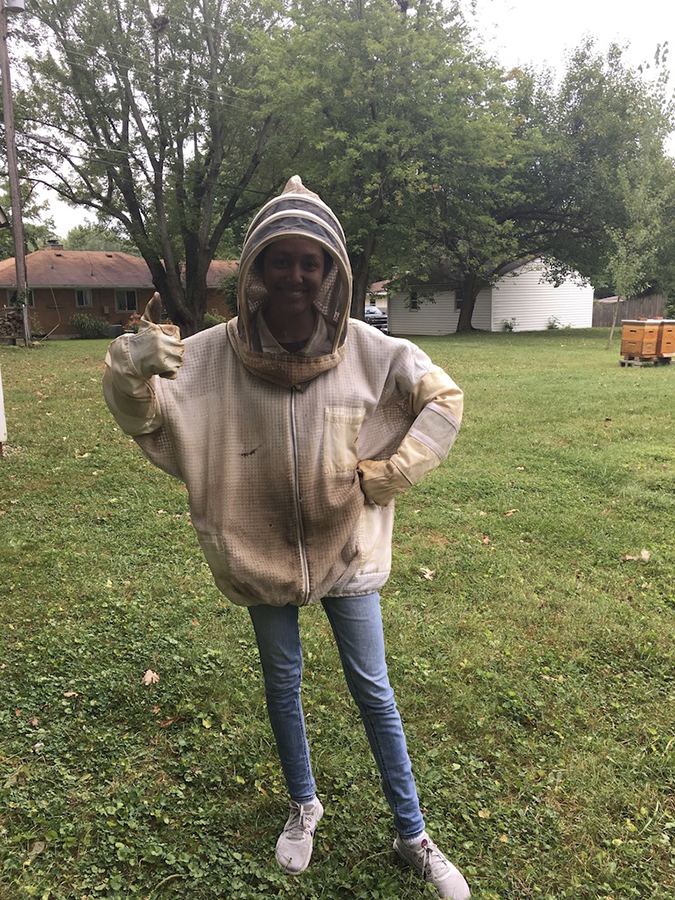Integrated Learning-Living Communities
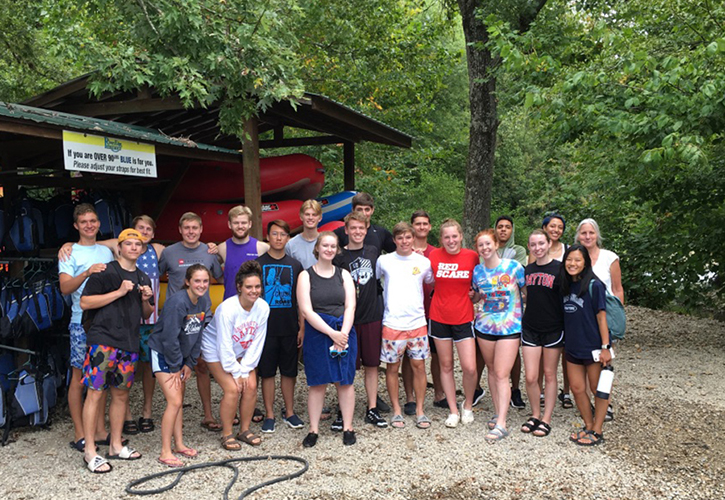
Students in the Business, Ethics and Environmental Sustainability community enjoy fall 2019 events
By Barbara Heroy John
The new BEES took advantage of September's warm weather to flit from one outdoor event to another. Attendance at two baseball games - a Clodbuster (1860s baseball) game) and the Dayton Dragon’s final game of the season—provided a backdrop for a guest lecture by Tony Capizzi (the Dayton lawyer most responsible for bringing the minor league team to the city at the turn of the century). His talk revealed the role of the Dragons in jumpstarting the rejuvenation of Dayton’s downtown, what economists term "positive spillover."
Most of the 'spills' experienced by BEES on our raft trip on the Little Miami River were also intentional, and positive, with some rafts taking on extra weight (in the form of salvaged tires). The trip emphasized the importance of protecting natural habitats against encroachment by human industrial and agricultural activity and suggested that incentives matter: that lowering the charge for tire disposal might reduce illicit dumping.
A later weekend trip to the Clifton Mill in Yellow Springs spilled into a cleanup effort in a more vulnerable section of the Little Miami, closer to its headwaters. The day culminated in talks by geologist Aaron Roarke and biologist Michelle Comer from the Ohio Department of Natural Resources about how to use seines to evaluate river health.
Some BEES visited the hives of local beekeeper Mike Pittman, where some slowdown in honeybee activity was apparent. But the human BEES kept up the pace.
An October bike trip to Sunwatch village (a 13th century Native American encampment/archeological site) revealed evidence of less recent unsustainable human practices on the banks of the Great Miami River, long before settlers of European descent came to the Miami Valley. A talk by Ohio historian Andy Hite emphasized the changes enabled by an end to hostilities between settlers of European descent and Native Americans in the region: reminding the group of what economist William Bernstein calls the trilemma: whether to trade, raid or protect.
The BEES then visited the Johnston Farm and Indian Agency in Piqua to understand the role of the Great Miami River and subsequently the canals in giving the region access to global markets. Dayton farmers first contracted individually to transport flour by keelboat (down the Great Miami, to the Ohio, to the Mississippi) to New York City in exchange for the East India Company’s calicos, transported over land through New York and Pennsylvania. Later public/private collaborations funded the Miami-Erie Canal, enabling direct two-way traffic through PA and NY, significantly lowering opportunity costs - saving time and money - and vindicating the original 1789 plan to name the city Venice rather than Dayton!
A November trek to Carillon Historical Park revealed the pivotal role of the Patterson clan in growing Dayton’s economy. Robert Patterson came up from Kentucky and is credited with building some of the first flour and textile mills in the area; a century later, John Patterson purchased what was to become the National Cash Register company, putting Dayton on the world map by launching an unprecedented marketing blitz and giving proprietors a reliable way to reduce employee embezzlement.
Field trips related to business ethics, industrialization and the role of nature as a source of resources and a sink for waste are already in the works for the spring of 2020.

